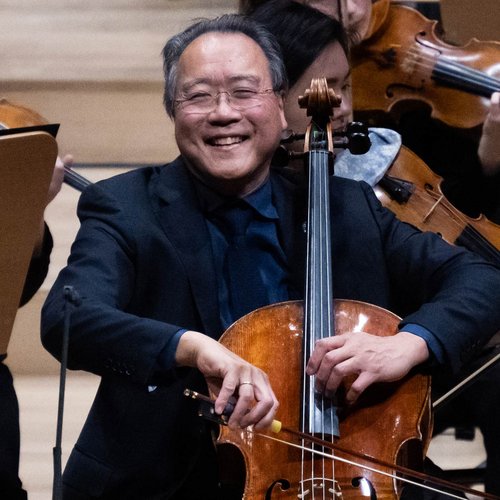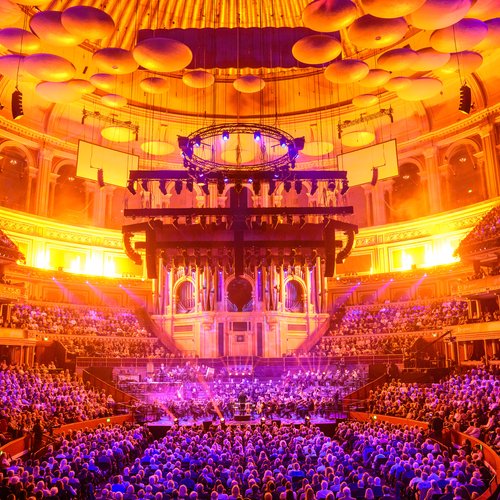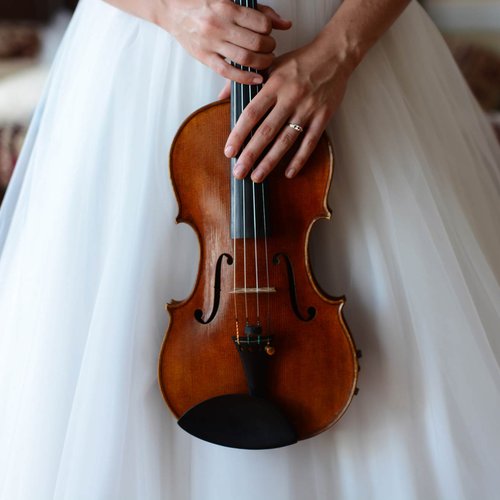What’s the difference between a symphony and a philharmonic orchestra?
28 December 2023, 11:41 | Updated: 21 February 2024, 11:31

Symphony orchestra’s magnificent ‘Jupiter’ at Royal Albert Hall | Classic FM Live
The difference between a symphony and a philharmonic lies in a choice of words used to name an orchestra. But it’s not quite as simple as that when you dig into the origins of the use of those words. Let’s settle the score…
Listen to this article
Loading audio...
Choosing a good, strong name for an orchestra is as important as any branding exercise. Most typically, the strongest name to use turns out to be that of the city or town the orchestra is based in – think of the London Symphony Orchestra, City of Birmingham Symphony Orchestra and the Los Angeles Philharmonic.
An orchestra might also be named after the person who founded it, like the Hallé, which was founded in 1858 by Sir Charles Hallé.
The other option is to name the orchestra for the purpose it fulfils, such as radio orchestras or those founded specially to record film soundtracks. Or perhaps the name will honour the repertoire the orchestra performs, like popular and light music orchestra, Boston Pops, or The Orchestra of the Age of Enlightenment, which borrows the name of the 18th-century period of radical social change and exchange of ideas that produced the music it specialises in.
But affixed to these names are often other words: symphony in many cases, and philharmonic in many of the others. But what is the difference between the terms ‘symphony’ and a ‘philharmonic’, and what do the words actually mean?
Read more: What is a symphony? We explain…
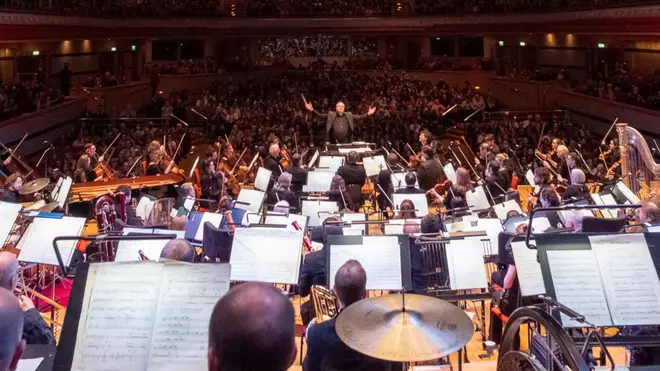
What is an orchestra?
An orchestra is an ensemble of 80 to 100 instrumentalists, performing in one of either the string, woodwind, brass, percussion, and in some cases keyboard, families of instruments.
The name ‘orchestra’, incidentally, is another Greek one. It refers to the circular part of a theatre where dancers and musicians would perform, which the modern symphony orchestra is reminiscent of in shape and function.
What we recognise as an orchestra today can be traced back to the 1600s, and the year 1607 when Italian composer Claudio Monteverdi formed a very specific group of musicians to premiere his opera, Orfeo.
Other similar groups were popping up too, and soon composers were writing music especially for these ensembles due to the magnificent sounds they produced. And they grew in size, until in the 19th century, huge forces were called up for symphonies by the likes of Beethoven and Mahler.
Read more: Why are orchestras laid out the way they are?
The ensembles came to be named after the type of music they were built for, these pieces of music called symphonies, and so are most commonly known as symphony orchestras. The composer of the first concert symphonies is widely agreed to have been the Italian composer, Giovanni Battista Sammartini, who was working in the early 1700s.

Phenomenal 25-year-old maestro Nicolò Foron wins international conducting competition
What’s the difference between a symphony and a philharmonic orchestra?
The difference between a symphony and a philharmonic lies in a choice of words used to name an orchestra.
‘Symphony’ literally means ‘agreement of sound’, and comes from the Greek word symphōnía. ‘Philharmonic’, also derived from Greek, means ‘love of harmony’ (‘phil’, like ‘philos’, is the love bit, harmonic, like ‘harmonikos’, is the harmony bit).
Symphony was a name that made sense for these groups performing symphonies and, as well as being used to name specific orchestras, is also a catch-all term for the type of ensemble. It follows that an obvious official name for distinct groups, then, would be the ‘Something’ Symphony Orchestra.
Read more: The 15 greatest symphonies of all time
The word ‘Philharmonic’ started being used in English in the 19th century, and was first used for societies that supported music and catered for (very wealthy) ‘lovers of harmony’ who paid a membership fee to see concerts from an orchestra attached to the organisation. Think of the Royal Philharmonic Society, which was patronised well enough to have the influence to commission works like Saint-Saëns’ ‘Organ’ Symphony and Beethoven’s Ninth Symphony.
The use of ‘Philharmonic’ for the name of orchestras would soon emerge as more ensembles grew from this funding model, and many cities, including London, Vienna and Berlin, have both a symphony orchestra and a philharmonic orchestra.
The history of the Royal Liverpool Philharmonic Orchestra, Classic FM’s Orchestra in North West England, is a lovely illustration of this ‘love of harmony’. It was founded by a group of amateur musicians, led by stockbroker and organist William Sudlow, for the pure love of music, and their passion formed into the Liverpool Philharmonic Society on 10 January 1840. Their objective was promoting ‘the Science and Practice of Music’, and theirs was the second philharmonic society of this kind established, the first being the Royal Philharmonic Society mentioned above.
Read more: Who is Vasily Petrenko? Meet the conductor at the helm of the Royal Philharmonic Orchestra
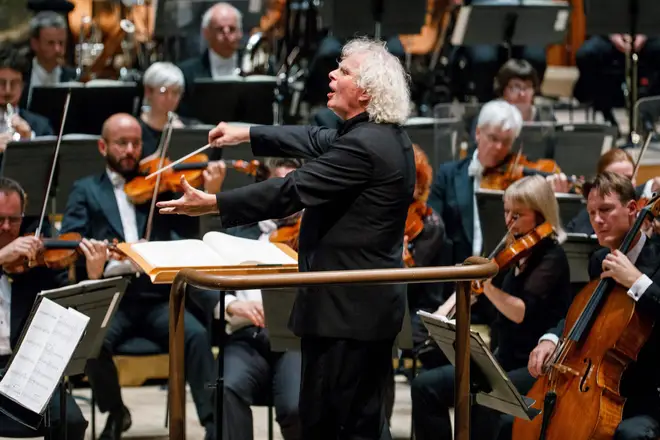
Which is bigger: a symphony or a philharmonic orchestra?
A symphony orchestra is the same size, and appears exactly the same, as a philharmonic orchestra on stage. They have the same instrument sections and numbers of players.
What are the other main types of orchestra?
Symphony and philharmonic orchestras might be the same size, but the third most common type of orchestra is distinguished by its size.
A chamber orchestra is traditionally a smaller orchestra, designed for performances in rooms as opposed to large concert halls, and scaled down in size accordingly. A chamber orchestra can have as little as 17 core members, like the Australian Chamber Orchestra, or around 30 players or more, like Classic FM’s Orchestra in North-East England and at Sage Gateshead, Royal Northern Sinfonia.
Sinfonia, incidentally, is similar to ‘symphony’ and another name that gets used for orchestras. It denotes small symphony orchestras, so fits chamber groups very well.
Which is better, ‘symphony’ or ‘philharmonic’?
Both words beautifully evoke the collective power of a love of music, and are equal in our eyes.
Today, there is no real difference between symphony and philharmonic orchestras. Which name suits a particular ensemble best could come back to the meaning of the words. An ensemble might choose ‘Symphony’ to centre our attention on the sounds and a coming together to celebrate music-making, whereas philharmonic might evoke the harmoniousness of the music, as well as the harmoniousness of those involved with the running of the organisation.
The other deciding factor is which word may already be taken, due to the other already being taken by a neighbouring ensemble already established in your city.
Ah, the beauty of having plenty of orchestras to experience.



























